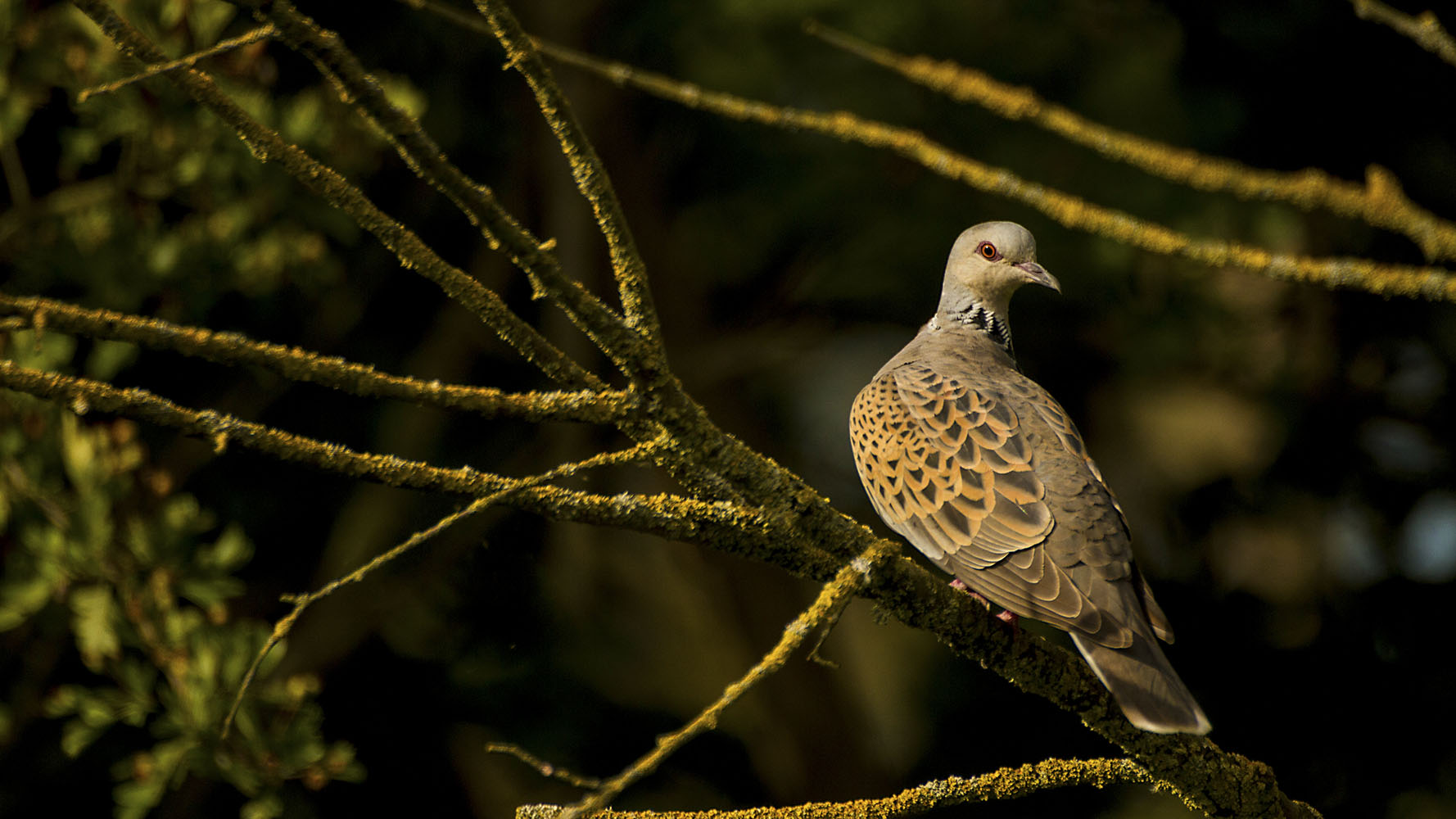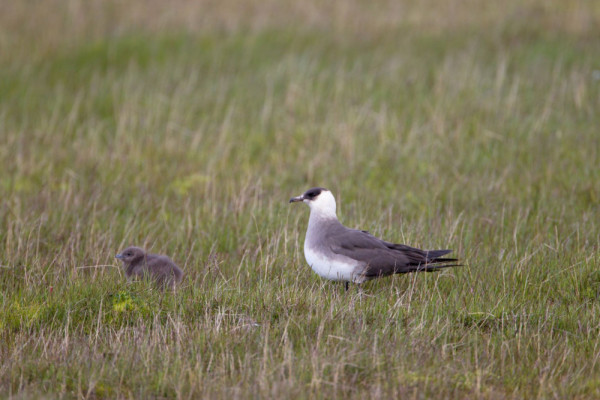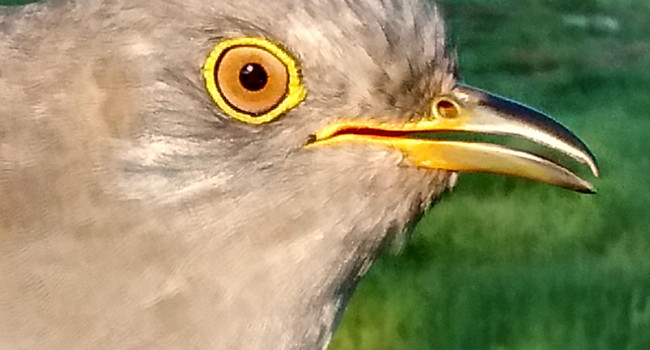
Migration blog (14th – 20th May)
As the year progresses towards the end of May we get to the sharp end of spring migration with arguably the greatest diversity of species and biggest number of birds on the move. The majority of birds that will breed across Britain and Ireland will already have arrived but there will still be some species yet to arrive, and those that have lagged behind such as last year's offspring that will be breeding for the first time this year. Britain and Ireland is also a stepping stone for many migrants that head further north to Iceland, Scandinavia or the high Arctic to breed.
The last week has seen a welcome change in the weather with a switch from the almost incessant northerly winds and cold temperatures to a warmer southerly airflow and the associated warmer temperatures. In previous migration blogs we talked about how this colder weather had dramatically affected the northward journey of many species, such as House Martin and Swallow, resulting in lower numbers reaching Britain and Ireland (and other European countries for that matter) than would be expected for the time of year. The resulting bottleneck was somewhat released with a change in the weather and as a result the reporting rates for both House Martin and Swallow leapt up to almost where they should be for the time of year, a relief to many that were eagerly waiting to see if ‘their’ House Martins would arrive back.
A run of southerly winds over the weekend resulted in a pulse of birds arriving with many areas seeing the first Swifts of the year as they screamed overhead announcing their arrival. Other species to arrive included Turtle Dove, Spotted Flycatcher, Whinchat, and Wood Warbler. These are all typically later arrivals and this is the time of year that they normally begin to arrive. Of the commoner warblers, Lesser Whitethroat in particular saw a good arrival with the reporting rate shooting up last week after a poor start to the spring, with birds arriving around a week behind their normal arrival date. Their rattling song can be heard from hedgerows and scrubby areas as they are keen to get on with the task of breeding.
Waders also took advantage in the change in weather and reports of Greenshank, Common Sandpiper, and Whimbrel all increased and mixed in with these were a few Curlew Sandpiper, Little Stint, and Sanderling, all of which will continue to pass through Britain and Ireland over the next couple of weeks.
A few rare and scarce species were also seen during the past week with top spot going to a Calandra Lark in Fair Isle, Shetland, its 7th record, making it the prime location for one to occur. A close second was the relocation, for the second time, of the Northern Mockingbird that was initially found in Devon in January, before being relocated on the 8th April in a garden in West Sussex the day after it was last seen in Devon. After an almost month long absence it was relocated again in a garden in Northumberland on the 6th May. The latest sighting allowed several people to see this extremely rare species now the travel restrictions have been lifted. Other scarce species noted included Broad-billed Sandpiper in Suffolk, 2 Buff-breasted Sandpipers, 1 in Suffolk and 1 in Cornwall, several Golden Orioles, a few Red-rumped Swallows, Purple Heron, Collard Pratincole in Lancashire, and a Black Stork in Kent.

Species focus — Skuas
Four species of skua regularly occur in British and Irish waters – Arctic, Great, Pomarine and Long-tailed. All are associated with the migrations of terns and small gulls during the migration period.
Arctic Skua breeds in small numbers in northern Scotland and more widely around the Arctic and sub-Arctic. Scottish breeding birds spend the winter months off the South African and Atlantic South American coasts. Spring migration from these wintering grounds peaks in May with the two colour phases, dark and light, migrating at slightly different times. The most southerly breeding populations are predominantly made up of dark phase birds, with light-phase birds more common in the more northerly breeding populations. Dark phase birds begin to move through in late April and early May with light phase birds following after this.
Great Skuas by comparison are a much shorter distance migrant, wintering off southern European coasts and in the Bay of Biscay. However, Scottish ringed birds have been found in Greenland and South America. At around 9,000 pairs, Scotland holds more than half of the world’s breeding population. Adult birds move along our coasts in late March and throughout April with non-breeding adults (4-10 year old birds) on the move through May and into June.
Breeding across the northern tundra regions of Russia the Pomarine Skua migrates through British and Irish waters in the last week in April and the first three weeks of May having spent the winter months in the tropical seas north of the Equator and south to southwest Africa and Argentina.
The scarcest of the four skuas to occur here is the Long-tailed Skua. Breeding in the high-Arctic and sub-Arctic regions from Scandinavia to Greenland, Long-tailed Skuas spend the winter months off Namibia and south to the western coast of South Africa. Spring passage through British and Irish waters peaks during the last three weeks of May and into early June. As with all of the skuas on migration, numbers seen each spring fluctuate and are governed by weather conditions. In favourable conditions most will be on the move out of the sight of land but during unfavourable westerly spring storms and strong winds these birds get pushed closer to land and can sometimes be seen in spectacular numbers. The weather forecast for the next week or so is one of low pressure systems bringing wet and windy weather to our west coast and the possibility of skuas with them.
Mid-May is a great time of year for scarce and rare species to turn up almost anywhere and almost anything is possible with birds arriving from all points of the compass.
Looking ahead
Much like the past few days, the weather for the next week looks to be a mix of sunshine and showers, conditions more associated with April than May. What this means for migrating birds is that it will continue to be a slow and steady affair with some days seeing fewer birds arrive, but other days potentially seeing a greater number and variety turning up. At the moment the weekend will bring light southerly winds for most parts coupled with longer spells of rain, and although the wind is from a southerly direction it is not coming from that far south and infact originates from the Atlantic and Bay of Biscay. This type of weather pattern is not conducive of large arrivals of birds but given the time of year and the fact that some species have been held up with the colder weather it is still likely to produce a variety of species in varying numbers depending on your location. The south coast will most likely see the lions share of any arrivals and these will most likely be species such as Turtle Dove, Spotted Flycatcher, Wheatear (Greenland race birds that typically arrive later in the year), Wood Sandpipers and perhaps a few Redstarts, Pied Flycatchers and Whinchats destined to breed further north across Scandinavia.
Nightjars have already been seen this spring but the next couple of weeks will see more birds arrive, migrant birds can be found anywhere from coastal scrub, heathland, or even roosting along branches of trees in towns and cities – their amazing camouflage making them difficult to spot.

The rest of next week is dominated by a westerly to north westerly airflow and periods of rain, some of which will be heavy and persistent. This weather pattern will very likely see a reduction in migration but given any clearer weather or lighter winds some species will still arrive and push northwards, and waders such as Wood Sandpipers, which have been arriving slightly earlier this year, should continue to arrive as well as Ringed Plover of the smaller tundrae race that breed along arctic coasts. Curlew Sandpiper, Little Stint and Grey Plover will also be passing through Britain and Ireland and there are few better looking waders than a summer plumaged Grey Plover. Dotterel, a hardy wader closly related to Grey Plover, breed on mountain tops but can be found in small flocks or ‘trips’ during mid-May, when they will often use arable fields, especially those that have little or no crop showing but can also be found on short turf or stoney beaches.
Mid-May is a great time of year for scarce and rare species to turn up almost anywhere and even though the weather isn’t that favourable species such as Terek Sandpiper, Bluethroat, Gull-billed Tern, Great Reed Warbler, Subalpine Warbler, Red-footed Falcon or Thrush Nightingale could still be found, and maybe even a Slender-billed Gull which would be most welcome to many a twitcher, given it has been so long since the last bird.







Share this page